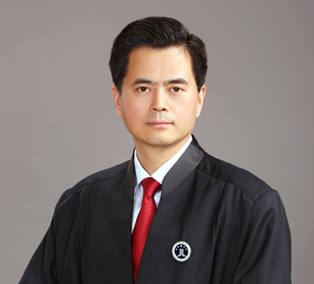Rights and wrongs
font-size:

| China's Vice-Premier Wang Qishan (3rd from left) and US Treasury Secretary Henry Paulson (3rd from right) with delegates after a group picture at the Strategic Economic Dialogue at the US Naval Academy in Annapolis, Maryland on June 18. Also pictured is US Health and Human Services Secretary Michael Leavitt (2nd from right). |
China's new strategy to tackle Intellectual Property Rights (IPR) issues will improve IPR protection in the country and attract greater intellectual resources from aboard, Chinese Vice-Premier Wang Qishan said in an opinion piece published in the Wall Street Journal last Tuesday.
The article was published shortly after China unveiled the Outline of National Intellectual Property Rights on June 10 and on the eve of the fourth round of Sino-US Strategic Economic Dialogue, in which Wang for the first time lead the delegation of Chinese ministers.
He describs the strategy as a milestone in China's IPR institution and said it would "boost innovation at home and turn China's abundant human resources into intellectual resources, with a positive and far-reaching impact on economic and social development in China".
He says: "The implementation of the national IPR strategy will open a new chapter of IPR protection in China."
Guided by the policy of incentive-based IP creation, effective usage, legal protection and scientific management, he explained, China will focus on improving the IPR regime, creating a legal market and cultural environment conducive to IPR protection. He believes it will help to and substantially upgrade China's capacity in IP creation, IPR usage, protection and management and will provide strong support for endeavors to build an innovative country and a moderately prosperous society in all respects.
The vice premier outlines four ways for China to achieve its goals in IPR protection:
The country will make timely revisions to IPR legislation, including the laws on patents, trademarks and copyrights as well as regulations on their implementation. The government will also bring forward legislation in the areas of hereditary resources, traditional lore, folk arts and geographical marks to improve the overall framework for IPR law enforcement and management.
Secondly, it will speed up the revision of laws and regulations on punishment for IPR infringements, and strengthen judicial protection and administrative law enforcement. China will mainly rely on judicial protection for intellectual property rights, and will mete out more severe penalties, reduce the costs of IPR protection and deter violation by raising its cost.
Thirdly, the authorities said they will properly define the scope of intellectual property rights to prevent its abuse, ensure a level playing field and protect lawful rights and interests of the public. They will ensure a better network of IPR policy with those in culture, education, scientific research and public health in order to uphold people's rights to properly use the information and fruits of innovation in ways permitted by law in their activities and make sure that innovation achievements are shared more equitably.
Finally, the government will launch extensive educational programs to further encourage innovation, promote moral standards, honesty and credibility, and condemn plagiarism, piracy and counterfeiting. It is expected to raise people's awareness of IPR and foster an innovation-friendly IPR culture in which knowledge and integrity are respected and laws and regulations are complied with.
Wang admits that China still has a long way to go in catching up with the US IPR usage, protection and management. But he also said that China has made remarkable progress in the sector since its reform and opening-up in 1978.
Before this China had no concept of property rights. After 1978 China promulgated and enforced a host of IPR laws and regulations; acceded to relevant international conventions, established IPR management and protection regimes, set up the Legal Aid Center for IPR Enforcement and the Service Center for IPR Protection, punished various IPR violations according to law and protected the interests of IPR holders.
"On IPR, China has managed to accomplish in 30 years what it took Western-developed countries more than 100 years," Wang says.
Since 2004, a nationwide campaign for IPR protection has been carried out each year to end trademark, patent and copyright infringements - particularly in import and export, wholesale markets, trade fairs, original-equipment manufacturer, printing and reproduction. The ongoing 2008 IPR protection campaign includes 280 measures in 10 areas.
"IPR protection in China has paid off," the Chinese vice premier says.
For example, the Xiangyang Street Market in Shanghai, which was known for selling replicas of branded products, has been closed down as required by law, while the Silk Street in Beijing, also known for its knock-offs, went through rectification and has since become a distribution center for famous brands.
The vice premier said he is confident that China's national IPR strategy, with its full enforcement, will result in more strict legal protection of intellectual property rights and greater respect for innovation achievements.
He calls on China and the US to work more closely on intellectual property rights, duly recognize their disparities in capabilities and standards of IPR protection, and properly handle their differences and disputes.
"Our two countries need to work together to overcome difficulties and challenges and encourage our business sectors and the general public to create more intellectual property rights for the benefit of our two peoples and humanity as a whole," he says.
-
Previous:
-
Next:






